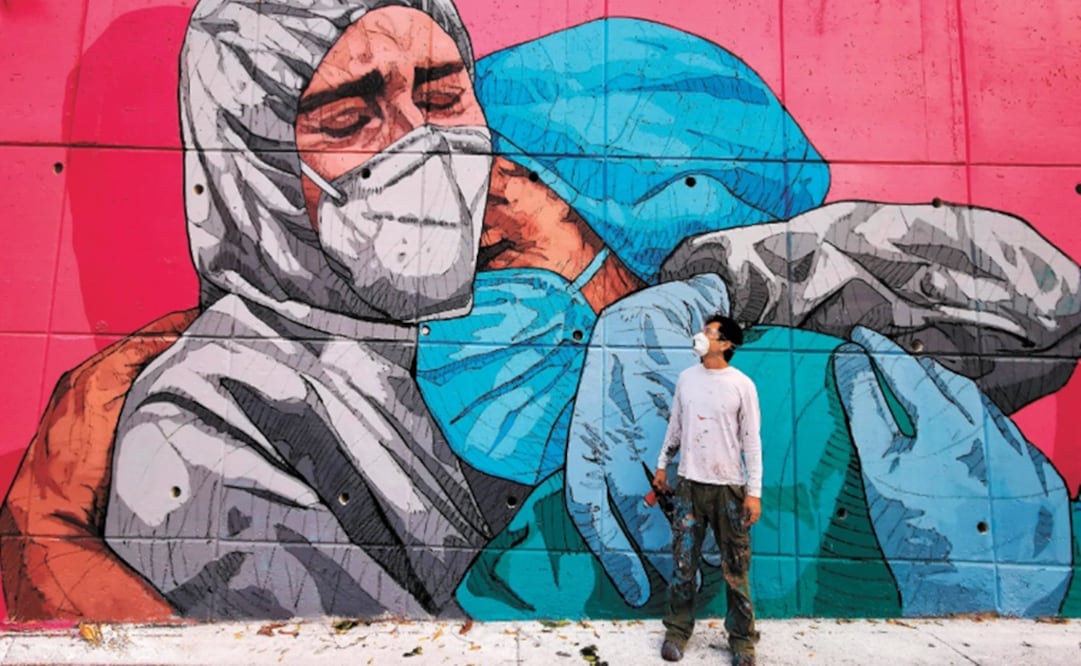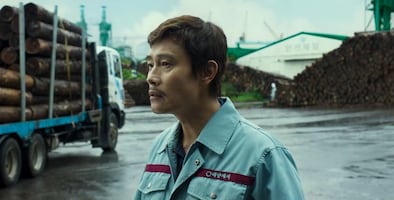Más Información

Él es Alejandro Rosales, asesino de Sandy Ly en EU; era uno de los 10 más buscados del FBI y fue detenido en México

Artículo 19 condena agresión y amenazas a tres periodistas de Sin Embargo en la CDMX; exigen investigación a la Fiscalía
David De León
and six other artists worked for five nights on the mural called “Heroes cry too.” They knew that the 12 daily hours they spent on it were nothing compared to what the protagonists of the mural do: frontline healthcare workers trying to save lives without rest.
The mural is a tribute to them; it is a solidarity message for them to know they are not alone.
The mural was painted in a wall of the High School No. 2 of the Autonomous University of Guerrero (UAGRO) located in the Ruiz Cortines Avenue, an area where most hospitals in Acapulco are located. Any doctor will be able to see it through a window.
Recommended: Los Pinos will house healthcare workers amid the public health crisis
On April 25 , David de León , his wife Abigail Medina , Víctor Pérez , Larry Salinas , Micky Vega , and David Hernández began to paint the mural. They decided to do it at night to avoid agglomerations in one of the most crowded avenues in Acapulco.
They were exhausting days. They arrived at 8 pm one day and left by 9 am on the next day. Working without light was complicated and made the work long: it took them five days when other times it would have taken three.

The mural is divided into three scenes: Doctors hugging, lifting each other’s spirits in times that are becoming increasingly challenging; doctors with a seriously ill patient; and doctors with a mechanic ventilator , those that have become essential during the pandemic.
The mural is 33 meters long and 4 meters wide . It is part of an awareness campaign during the pandemic. It is the third one they have painted. The other two are called “We’ll See Each Other Soon” and “Heroes Without a Cape.”
David and his wife are artists that aim to reflect reality in their work. David and many artists decided to fill Acapulco with colors on its darkest years: They made murals in many places featuring the trades and figures that represent the port.
Recommended: The Netherlands gifts tulips to Mexican healthcare workers
This was not the exception: The idea came from reality. David and his wife heard stories from relatives and friends who are doctors and nurses . They told them about the workday at the intensive care unit where doctors and patients are fighting against the virus.
They heard how doctors and nurses spend up to 14 hours without leaving the unit, most times without food or water. They told them how they have to wear diapers to avoid going to the restroom. Once they enter the area, they said, they are only allowed to leave until the end of the workday.

In one of the scenes, the mural portrays doctors with a seriously ill patient.
David and Abigail were shaken by a story: A doctor that works at the Mexican Institute for Social Security (IMSS) in Acapulco told them that he said goodbye to his family a month ago. He gave his mother his bank cards and passwords, the deed to his house, and moved to a room he leased during the pandemic. He did not tell the landlord he is a doctor out of fear of being kicked out when he finds out.
He has not seen his two daughters , wife , and parents since then.
Recommended: The Mexican nurse sending hope to COVID-19 patients
He cannot do it now. He spends most days in the hospital and is aware that he can get infected.
“We understood he was saying goodbye , that he could die; we understood the seriousness of the pandemic and the worth of all the doctors and nurses,” says David on the phone.
That is why they decided to pay homage to them through art.
In Acapulco, a doctor has already died from coronavirus ; he worked at the Vicente Guerrero Hospital of the IMSS like David’s friend. Another 60 healthcare workers are infected with COVID-19 mostly because of the lack of medical supplies . Nevertheless, they continue fighting.
Recommended: Mexican healthcare workers urgently need protective equipment to treat patients infected with COVID-19
mp
Noticias según tus intereses
[Publicidad]
[Publicidad]












